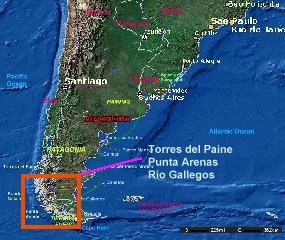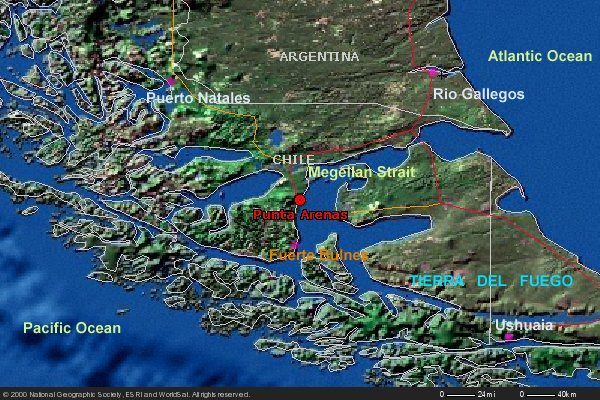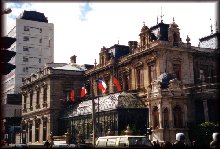
|
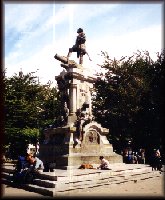
|
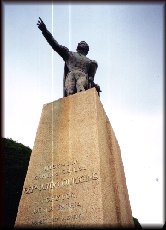
|
| The southernmost Chilean city, Punta Arenas. The city has many
grand late 19th C. merchant houses and mansions. That was the golden
age of S. Patagonia, where great traders supply sheep wool and lamb to
the world, and when ships have to stop by to travel between Atlantic and
the Pacific... this ended with the comletion of the Panama Canal. |
Monument to Megellan, the great explorer who pioneered the maritime
journey to the Pacific from the Atlantic. Of course, to many parts
of the world, he is one of the many blood thirsty Spanish conquistadors,
who brought war and destruction along the way. Megellan did not succeed
in sailing round the world, as he was later killed in the southern Philippines.
His remaining sailors eventually reached Europe, after a long journey across
Southeast Asia and the Indian Ocean.
|
General O'Higgins, liberator of Chile. Son of an Irish immigrant,
his statue is found everywhere in Chile, and main streets are named after
him. |
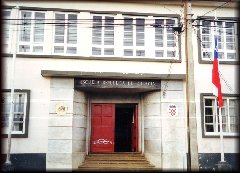
|
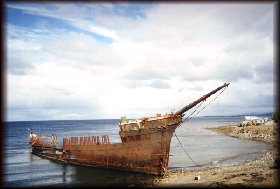
|
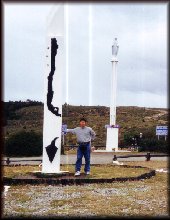
|
| The Croatian school in Punta Arenas. Southern Chile has many
people of Croatian descent. One of Punta Arenas' main streets used
to be called Yugoslavia. Now it's renamed Croacia. |
One of the many shipwrecks along the treacherous Megellan Straits.
|
The official geographical centre of Chile... stretches from the Atacama
Desert to the South Pole... of course, if one goes by the internationally
recognised boundaries, then this area is the southern most point of Chile,
NOT the centre... |
|
Wintering at San Julian,
Magellan also decides to kidnap two giants for Charles V...He put a number
of gewgaws in their hands and, while his men riveted iron fetters round
their ankles, assured them that these too were another kind of ornament...
History may aspire to symmetry but rarely achieves it: the Giant Paul died
of scurvy in the Pacific and his body fed to the sharks; Magellan's body
lay face down in the shallows at Mactan, felled by a Filipino sword.
Bruce Chatwin, In Patagonia
|
|
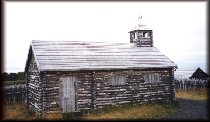
|
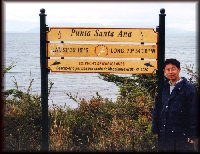
|
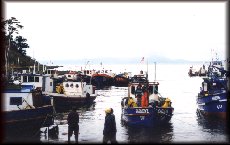
|
| Fuerte Bulnes, the fortress built in 1843 to establish Chilean presence
on the Megellan Straits. |
Punta Santa Anna, near the southernmost point of the South American
continent. |
Fishing boats near Fuerte Bulnes, where many Spaniards died of starvation
in a failed attempt to establish two settlements (Nombre de Jesus and Rey
Don Felipe) in the 1580's. Only one survived to tell the horror story.
The area became known as Puerto del Hambre or Port Famine. |
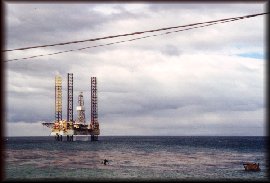
|
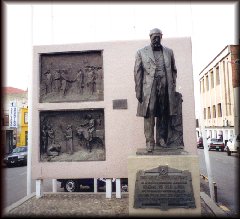
|
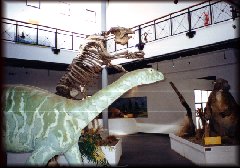
|
| Oil wells near Punta Arenas. |
Rio Gallegos, Argentina. Monument to the 1883 meeting between
the Argentine and Chilean presidents to settle dispute over the Megellan
Straits. |
Patagonia is a treasure trove of dinosaur fossils... and dino relics
are the pride of Rio Gallegos' museum. |
|
I passed through three boring
towns, San Julian, Santa Cruz and Rio Gallegos.
Bruce Chatwin, In Patagonia
|
|
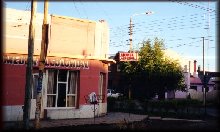
|
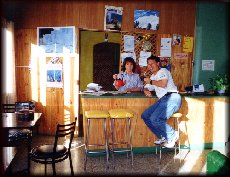
|
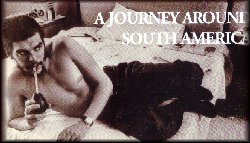 |
| Bruce Chatwin: "I stayed at a cheap hotel..." So did I... at
Hotel Colonial, but this one is painted pink, while Chatwin's painted "poisonous
green". |
Sipping mate with the hotel owner... gone native ? |
Cover of Che Guevara's Motorcycle Diaries... he loves mate too! |
|
La Anonima...They imported
stud flocks from New Zealand, shepherds and their dogs from Outer Isles,
and farm managers from the British Army, who stamped the smartness of the
parade ground over the operation. The result was that the Province
of Santa Cruz looked like an outpost of the Empire, administered by Spanish-speaking
officials.
Bruce Chatwin, In Patagonia
|
|
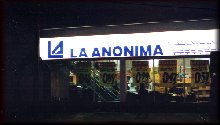
|
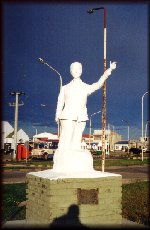
|
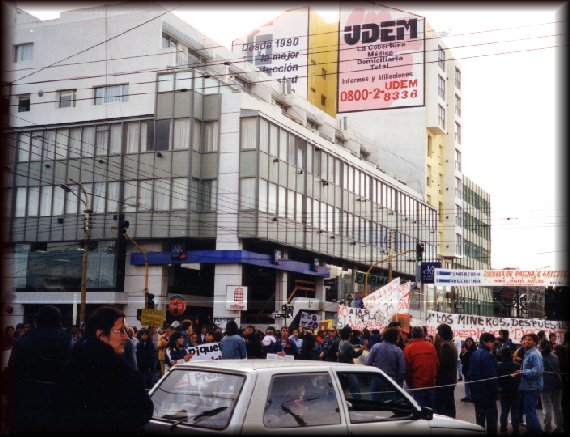
|
| La Anonima - a supermarket chain which was originally part of a large
group that controls the fortunes of southern Patagonia, in the days of
the wool barons... |
Statue of Evita Person in Rio Gallegos.
|
Student protests in Rio Gallegos. Surely this isn't as serious
as the Revolution of 1920, when migrant farm workers from Chiloe Island,
Chile, rebelled...leading to a bloody suppression which led to numerous
massacres. It were long forgotten until Bruce Chatwin immortalised
it in his book. |


